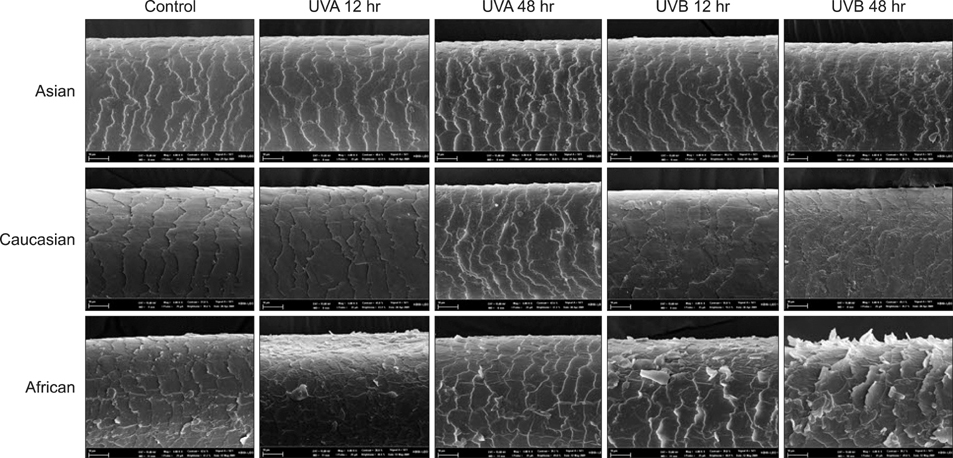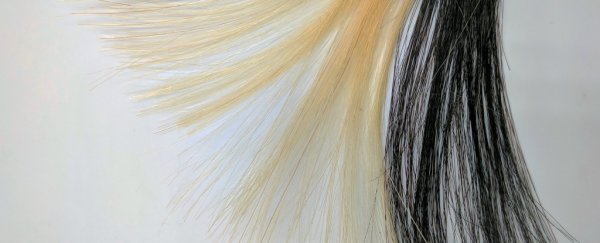Graphene is definitely a wonder material – you can use it to make filthy water drinkable, feed it to spiders to make the strongest material on Earth, or hit it with a bullet to turn it into diamond.
You know, just everyday stuff.
The newest application for graphene isn't quite as world-changing, but it's still pretty amazing – making 'chemical free' black hair dye.
The researchers behind this feat claim that it's a less damaging way to colour hair, which makes sense when you understand how regular hair dye works.
The outside of the hair, called the cuticle, is made of cells that overlap in a scale-like way.
 (Jae Hong Ji, et al/Wikimedia)
(Jae Hong Ji, et al/Wikimedia)
When you dye the hair, you actually have to open those scales with chemical compounds in order to deposit the dye inside.
"Your hair is covered in these cuticle scales like the scales of a fish, and people have to use ammonia or organic amines to lift the scales and allow dye molecules to get inside a lot quicker," says senior author Jiaxing Huang, a materials scientist at Northwestern University.
This is why the more the hair is dyed, the more damage it can potentially do, leaving your locks dry and brittle.
Enter everyone's favourite: graphene.
Instead of penetrating the hair, graphene actually just coats it, in the same way that wash-out dyes do. But the difference is that the graphene hair colour stays in long enough to be considered permanent – at least 30 washes.
What makes it possible is the thin sheet-like structure of the wonder material.
"Imagine a piece of paper. A business card is very rigid and doesn't flex by itself. But if you take a much bigger sheet of newspaper - if you still can find one nowadays - it can bend easily. This makes graphene sheets a good coating material," Huang says.
When comparing graphene to other temporary hair dye particles, such as carbon black or iron oxide, there's basically no competition, according to the team.
"It's similar to the difference between a wet paper towel and a tennis ball," he said.
"The paper towel is going to wrap and stick much better. The ball-like particles are much more easily removed with shampoo."
At this point you may be thinking about how expensive graphene is, and you're totally right. But while it's hard and pricey to make high-quality graphene for scientific purposes, some of it could be cheap enough to end up as hair dye.
"You can have graphene that is too lousy for higher-end electronic applications, but it's perfectly okay for this," says Huang.
"I think that this could happen a lot sooner than many of the other proposed applications."
It works, so when will you be seeing graphene hair dye on your supermarket shelves?
Although the team is super excited about it, it's important to note that it's still definitely in the research phase. But it's definitely an interesting way of using our most exciting wonder material.
"This is an idea that was inspired by curiosity. It was very fun to do, but it didn't sound very big and noble when we started working on it," Huang says.
"But after we deep-dived into studying hair dyes, we realized that, wow, this is actually not at all a small problem. And it's one that graphene could really help to solve."
The research has been published in Chem.
